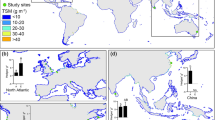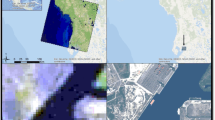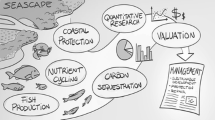Abstract
A number of local, regional, state, and federal programs are in place that strive to protect and restore coastal waters and habitats, and which specifically address eutrophication and nutrient over-enrichment. There are, however, no easily implemented and reliable methods or sources of data and information for citizens, coastal managers, elected officials, and agency staff who are responsible for managing a coastal area to determine sources of nutrients and potential impacts to coastal waters. Coordination among federal and local agencies remains inadequate. In the few examples of successful coastal nutrient management programs, effective nutrient management strategies are often partnerships of national, regional, and local efforts. The recent National Research Council (2000) examination of issues and management options calls for development of a National Coastal Nutrient Management Strategy, coordinated between national, state and local programs, academia, and the private sector. The proposed National Coastal Nutrient Management Strategy includes recommendations for local programs to consider in developing an effective nutrient management strategy, such as setting goals for restoration, determining nutrient reductions needed to meet goals, and monitoring results. The proposed strategy also identifies priority actions which federal programs should consider, including identifying gaps and overlaps in existing and proposed national programs for all aspects of nutrient over-enrichment; increasing accessibility to data, information and expertise on nutrient over-enrichment causes, effects, and management options; and setting clear guidelines for nutrient loads. A nationally consistent monitoring program and targeted research, specifically for atmospheric deposition, seasonal variability of nitrogen and phosphorus enrichment effects, the role of specific nutrients in the occurrence of harmful algal blooms, and economic impacts of nutrient over-enrichment were also identified as priority needs.
Similar content being viewed by others
Literature Cited
Association of National Estuary Programs (ANEP). 1997. Key management issues. Background paper and summary of a National Estuary Program Workshop held in San Francisco, California. Environmental Protection Agency Office of Water, Washington, D.C.
Bricker, S. B., C. G. Clement, D. E. Pirhalla, S. P. Orlando, andD. G. G. Farrow. 1999. National estuarine eutrophication assessment: Effects of nutrient enrichment in the nation’s estuaries. Special Projects Office and the National Centers for Coastal Ocean Science, National Ocean Service, National Oceanic and Atmospheric Administration, Silver Spring, Maryland.
Environmental Protection Agency (EPA). 1989. Saving bays and estuaries: A primer for establishing and managing estuary programs. Office of Marine and Estuarine Protection, Washington, D.C.
National Research Council (NRC). 1990. Managing troubled waters: The role of marine environmental monitoring. National Academy Press, Washington, D.C.
National Research Council (NRC). 1999. New strategies for America’s watersheds. National Academy Press, Washington, D.C.
National Research Council (NRC). 2000. Clean coastal waters: Understanding and reducing the effects of nutrient pollution. National Academy Press, Washington, D.C.
Olem, H. and G. Flock (eds.). 1990. The Lake and Reservoir Restoration Guidance Manual, 2nd edition. EPA-440/4-90-006. Prepared by North American Lake Management Society for the U.S. Environmental Protection Agency, Washington, D.C.
Schueler, T. R. 1996. Crafting better urban watershed protection plans.Watershed Protection Techniques 2:1–9.
Valigura, R. A., R. B. Alexander, M. S. Castro, T. P. Meyers, H. W. Paerl, P. A. Stacey, andR. E. Turner (eds.). 2000. Nitrogen Loading in Coastal Water Bodies: An Atmospheric Perspective. Coastal and Estuarine Studies 57. American Geophysical Union, Washington, D.C.
Source of Unpublished Materials
Committee on Environment and Natural Resources (CENR). 1998. CENR Strategic Planning [Online]. Available atwww.whitehouse.gov/WH/EOP/OSTP/NSCT (November 1999).
Author information
Authors and Affiliations
Corresponding author
Rights and permissions
About this article
Cite this article
Greening, H., Elfring, C. Local, state, regional, and federal roles in coastal nutrient management. Estuaries 25, 838–847 (2002). https://doi.org/10.1007/BF02804909
Received:
Accepted:
Issue Date:
DOI: https://doi.org/10.1007/BF02804909




